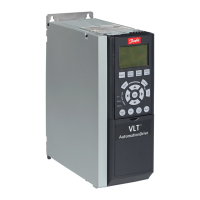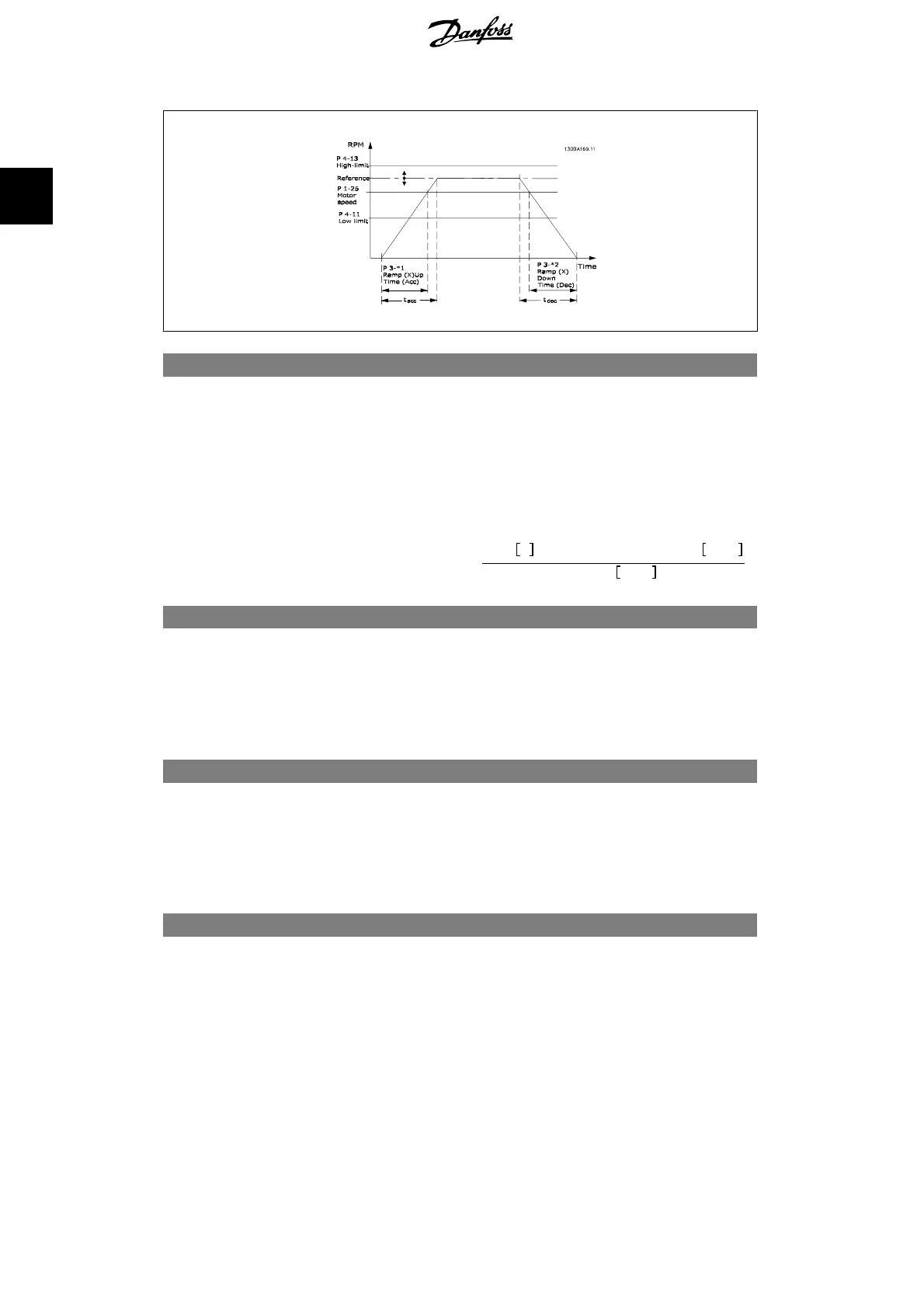3-42 Ramp 1 Ramp Down Time
Range: Function:
Size re-
lated
[0.01 - 3600.00 s] Enter the ramp-down time, i.e. the deceleration time from the
rated motor speed n
M,N
(par. 1-25) to 0 RPM. Choose a ramp-
down time such that no over-voltage arises in the inverter due
to regenerative operation of the motor, and such that the gen-
erated current does not exceed the current limit set in par. 4-18.
The value 0.00 corresponds to 0.01 s in speed mode. See ramp-
up time in par. 3-41.
Par
.3− 42 =
t
acc
s xn
M
,
N
(
par
.1− 25
)
RPM
Δ
ref RPM
3-45 Ramp 1 S-ramp Ratio at Accel. Start
Range: Function:
50%
*
[1 - 99%] Enter the proportion of the total ramp-up time (par. 3-41) in
which the acceleration torque increases. The larger the per-
centage value, the greater the jerk compensation achieved, and
thus the lower the torque jerks occurring in the application.
3-46 Ramp 1 S-ramp Ratio at Accel. End
Range: Function:
50%
*
[1 - 99%] Enter the proportion of the total ramp-up time (par. 3-41) in
which the acceleration torque decreases. The larger the per-
centage value, the greater the jerk compensation achieved, and
thus the lower the torque jerks in the application.
3-47 Ramp 1 S-ramp Ratio at Decel. Start
Range: Function:
50%
*
[1 - 99%] Enter the proportion of the total ramp-down time (par. 3-42)
where the deceleration torque increases. The larger the per-
centage value, the greater the jerk compensation achieved, and
thus the lower the torque jerks in the application.
2. How to Programme FC 300 Programming Guide
78
MG.33.M2.02 - VLT
®
is a registered Danfoss trademark
2

